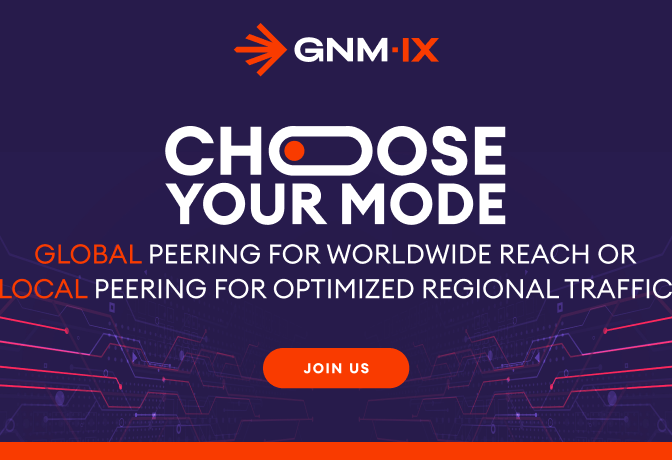We use cookies to improve our services. By continuing to navigate the site, you agree to the terms of use of cookies.
Filters
Map search

19 Mar 2025
Flexible Traffic Exchange with GNM-IX: Choose Your Mode – Global or Local Peering
At GNM-IX, we understand that every network has unique needs. That’s why we offer two distinct peering options: Global Connectivity and Localized Peering. Whether you’re a carrier, content provider, or telecom operator, you can choose the mode that best aligns with your traffic exchange requirements.
Global Connectivity: Open Traffic Exchange Across Regions
For networks that require expansive, multi-region connectivity, our Global Connectivity option delivers:
- Open Traffic Exchange Across Regions: Seamlessly connect with partners worldwide.
- Multi-Region Routing: Optimize traffic flow across diverse geographical areas.
- Cost Efficiency: Leverage shared infrastructure to reduce operational expenses.
This option is ideal for organizations looking to expand their reach and ensure robust, global connectivity.
Localized Peering: Enhanced Performance Within Metro Areas
For networks that prioritize strict traffic localization, our Localized Peering feature offers:
- Traffic Localization: Keep traffic exchange within designated metro areas or regions.
- Lower Latency: Improve response times by minimizing the distance data travels.
- Precise Routing Control: Ensure traffic stays within defined boundaries for enhanced performance.
This option is perfect for networks focused on delivering localized content, optimizing latency, or maintaining strict routing policies.
How It Works
GNM-IX’s flexible architecture supports both global and local peering seamlessly:
- Segmented Peering Architecture: Regional segments (e.g., EU, specific metro areas) allow for localized traffic exchange, while global connectivity spans multiple regions.
- Geo-Community Route Tagging: Every connection is marked with a geo-community attribute (city/region), enabling precise route filtering and management.
- Controlled Traffic Scope: Routes are restricted to their assigned segments for localized peering, while global peering ensures open, cross-region connectivity.
The Choice Is Yours
With GNM-IX, you don’t have to compromise. Whether you need global reach or localized performance, we provide the tools to tailor your traffic exchange strategy. Both options are included in our standard service, with no additional setup or costs.
Ready to Optimize Your Traffic Exchange?
Contact us at sales@gnm.net or visit gnm.net to learn more about how GNM-IX can meet your connectivity needs.